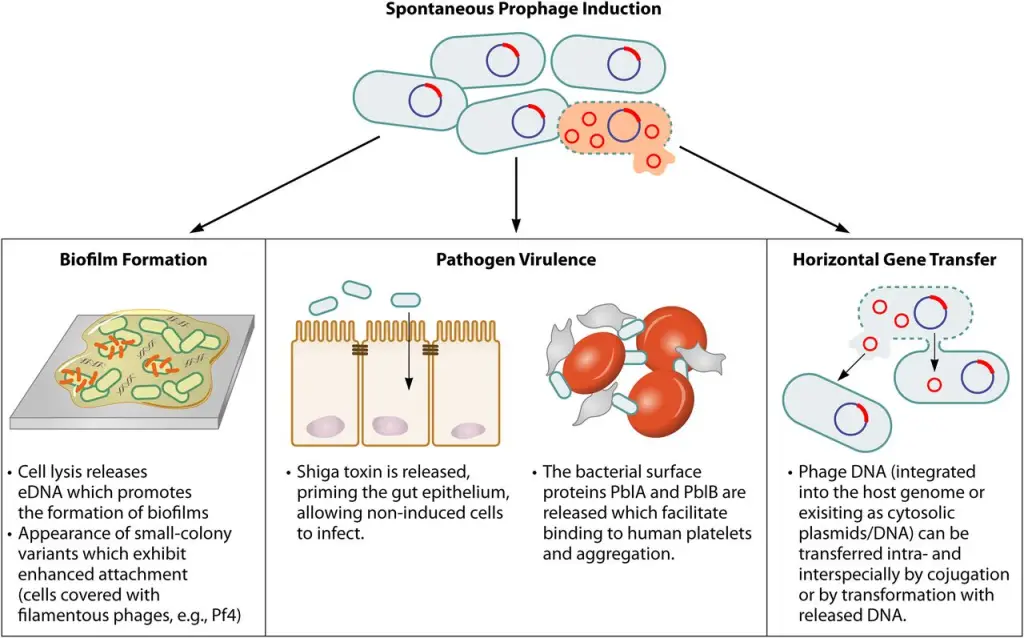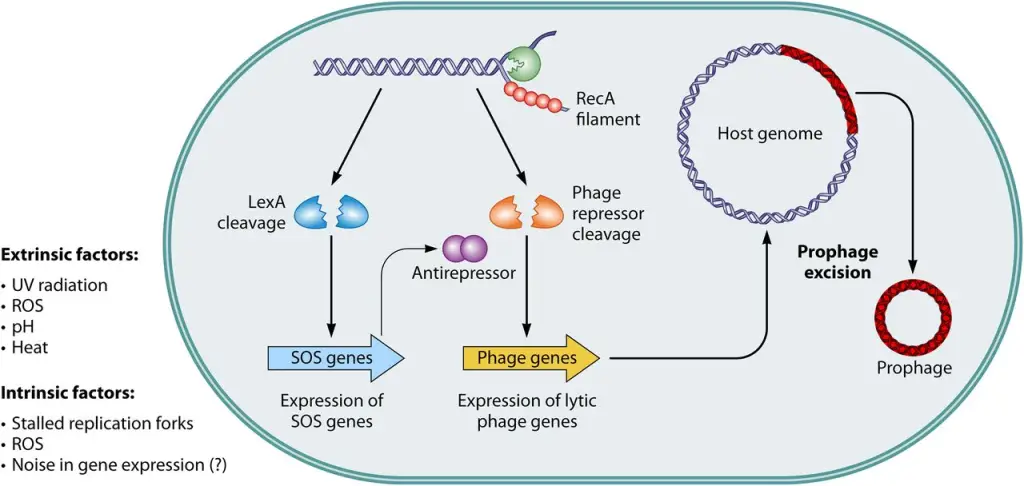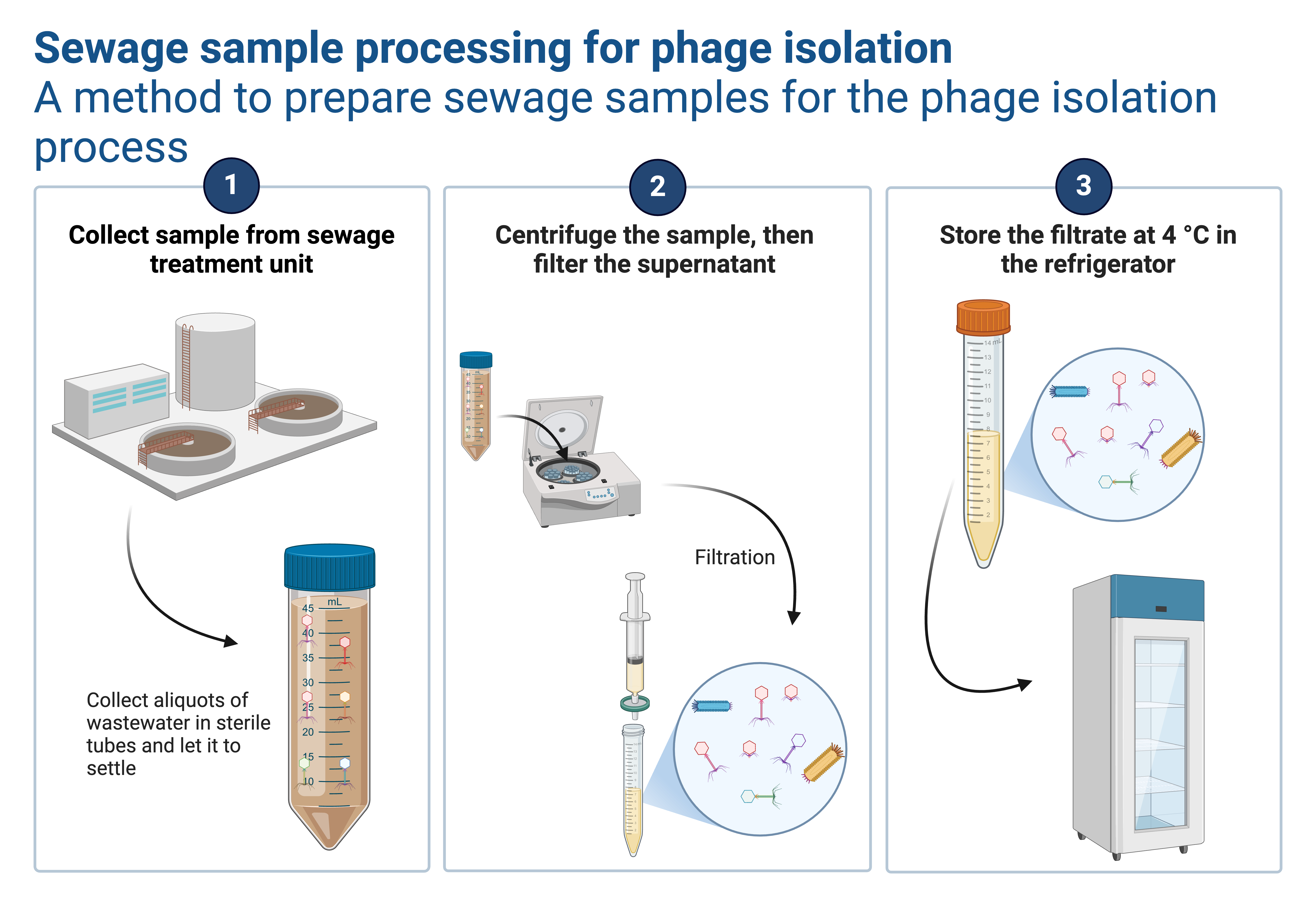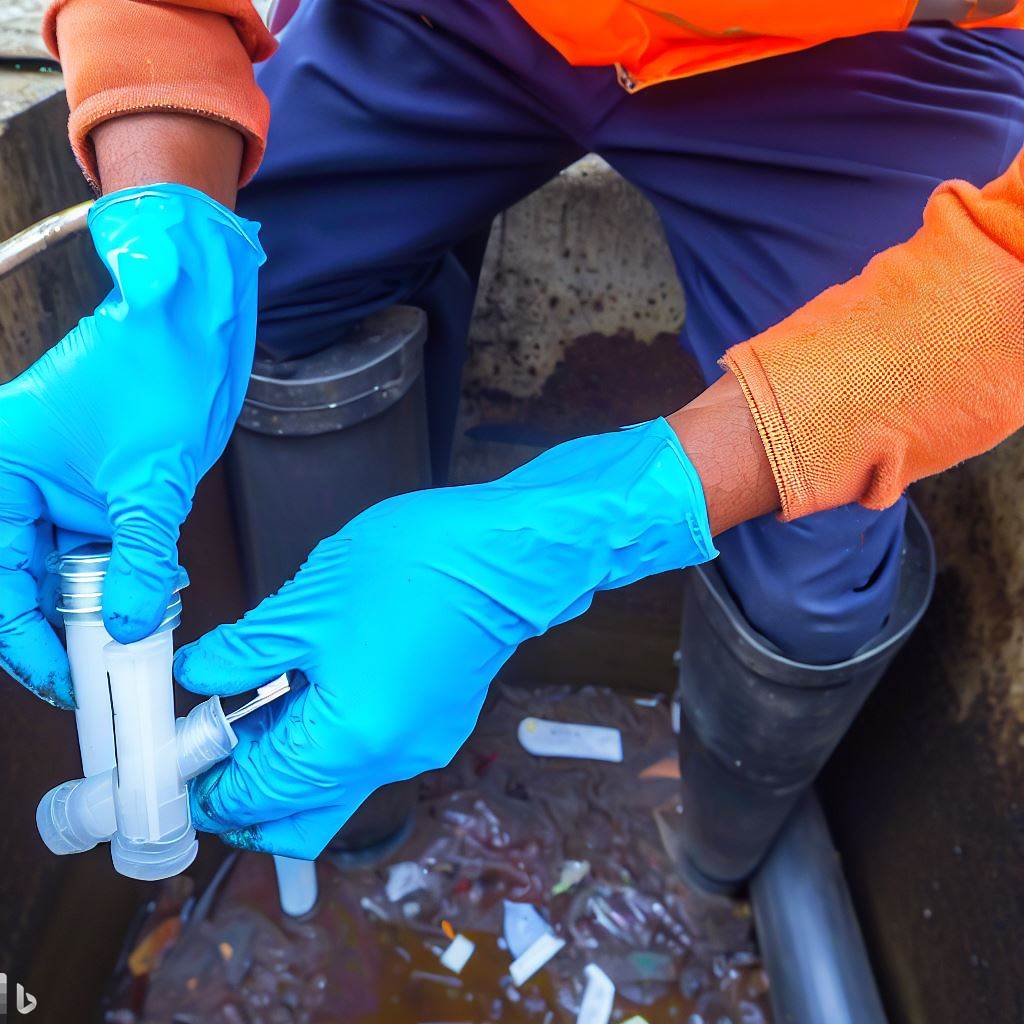
Bacteriophages, particularly template phages, have developed sophisticated tactics for breaching bacterial defenses and binding to the bacterial genome. Within their hosts, they replicate, and under the influence of certain stressors, they trigger a transition to their lytic cycle. This whole process of shifting from a lysogenic state to a lytic cycle is known as phage induction. This captivating phenomenon has entranced researchers and offers substantial potential in realms extending from biotechnology to medicine.
The Dance of the Microbes
At the heart of the phage induction process lies a delicate dance between bacteria and their viral invaders. Bacteriophages are specialized parasites that specifically target bacteria. Composed of genetic material encased in a protein shell, they seek out bacterial hosts and attach to their surfaces. Once attached, they inject their genetic material into the host cell, hijacking its molecular machinery to produce more phages. This process, known as the lytic cycle, culminates in the release of new phages through the lysis, or bursting, of the bacterial cell.
Enter Phage Induction
Phage induction, a pivotal moment in the phage lifecycle, occurs when a temperate phage – a type of phage capable of both the lytic and lysogenic cycles – decides its fate. In the lytic cycle, the phage replicates explosively, decimating the bacterial population. In the lysogenic cycle, however, the phage integrates its genetic material into the bacterial chromosome, lying dormant and replicating alongside the host. But how does a temperate phage choose between these two paths?
The answer lies in a finely tuned-equilibrium between the phage and its host. When conditions are favorable for both the phage and the host, the lysogenic cycle prevails. However, when the bacterial cell faces stressors such as nutrient scarcity or DNA damage, a switch is triggered, leading to the lytic cycle – this is phage induction.

The Molecular Mechanism
Phage induction is orchestrated by a delicate interplay of molecular signals. Upon sensing stress, the bacterial SOS response is activated. SOS is a widespread reaction to DNA damage where the cell cycle halts, and mechanisms for DNA repair and mutagenesis are activated. This response system, primarily controlled by the protein RecA, initiates a cascade of events that ultimately results in the cleavage of the phage’s repressor protein. This repressor normally keeps the phage genome dormant, preventing its expression and the onset of the lytic cycle. With the repressor out of the way, the phage’s genes are transcribed and translated, giving rise to the machinery required for the replication and assembly of new phages.

An alternative pathway involves the interaction of phage repressors with antirepressor proteins, resulting in the phage repressors’ inactivation. This, in turn, prompts the release of repression on lytic promoters. These promoters enable the excision of the prophage from the host genome, followed by its encapsulation into virions. Subsequently, the virions are released from the host cell through a coordinated process of cell lysis mediated by holin and lysin proteins.
Implications and Applications
The study of phage induction is more than just a captivating journey into the world of molecular warfare. It holds immense potential for diverse applications:
1. Biotechnology: Phage induction has paved the way for the development of novel biotechnological tools. Phages can be engineered to deliver therapeutic payloads to specific bacterial strains, targeting infections without harming the host. This approach, known as phage therapy, offers a promising alternative to antibiotics in the face of antibiotic-resistant bacteria.
2. Genetic Engineering: The molecular mechanisms underlying phage induction have been harnessed for genetic engineering techniques. Inducible promoters, inspired by the bacterial SOS response, allow precise control over gene expression in various organisms, revolutionizing fields such as synthetic biology.
3. Environmental Monitoring: Phage induction can be exploited to detect bacterial contamination in food, water, and other environments. By engineering phages to express fluorescent proteins upon encountering specific bacterial strains, researchers have created biosensors capable of rapid, specific, and real-time detection.
4. Insight into Evolution: The intricate relationship between phages and bacteria provides a unique window into the evolutionary arms race. Phage induction allows us to witness the constant adaptations and counter-adaptations that shape microbial ecosystems over time.
Unraveling the Microbial Enigma
Phage induction stands as a testament to the intricate and evolving interplay between the smallest inhabitants of our planet. As researchers continue to delve deeper into this phenomenon, we uncover not only the mechanisms governing microbial warfare but also a treasure trove of applications that could revolutionize industries and reshape our understanding of biology. Just as phages orchestrate a dance within the bacterial realm, phage induction itself is a captivating choreography of molecules and events that continually shape the unseen world around us.
References
Nanda, A. M., Thormann, K., & Frunzke, J. (2015). Impact of spontaneous prophage induction on the fitness of bacterial populations and host-microbe interactions. Journal of Bacteriology, 197(3), 410-419. (Photos used in this article were sourced from this study.)



Leave a Reply
You must be logged in to post a comment.